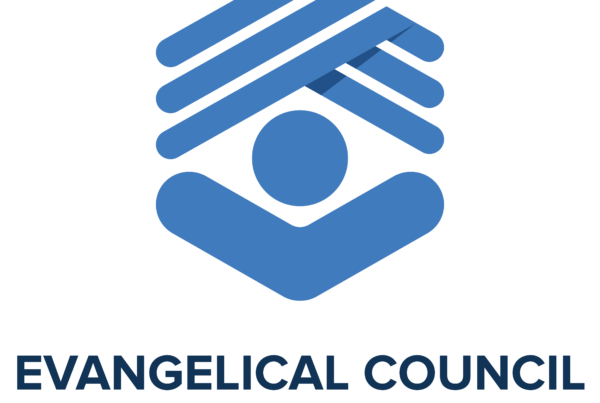Whether you are a teacher, children’s ministry director in a local church, or camp administrator, what would you give to know with 100% confidence that you have filtered out all potential predators from working within your organization?
Unfortunately there’s no foolproof product, system or process that can fully screen out predators because none of us can truly know the thoughts and desires of those we work with in children’s ministry. Scripture tells us that only God knows the heart (Psalm 44:21; Jeremiah 17:10), and that each person has a fallen human nature with a capacity for great evil (Jeremiah 17:9; Romans 3:23; Mark 7:20-23). So, if we want to keep children safe, what can we do?
Typically, when we think about predatory behavior, we think about certain profiles or personalities of predators. We think about the sociopaths of true crime documentaries or mystery thriller novels. These individuals don’t care about the feelings of others or take responsibility for their actions. Certainly, these are attributes of some serial abusers and pedophiles. However, those responsible for keeping children safe should also recognize some troubling abuse statistics.
Darkness To Light, an organization devoted to helping adults prevent, recognize, and react responsibly to child sexual abuse, notes that 90% of children who are victims of sexual abuse know their abuser, and that as many as 40% of children who are sexually abused are abused by an older or more powerful child. They also report that, “It is impossible to identify specific characteristics that are common to all those who molest children.”[1] This should cause us great concern, because it means that anybody could be an abuser.
Identifying Predators
So, what kinds of things should we look for when identifying predatory behavior?[2]
- Predators will regularly push the boundaries of a relationship in order to isolate and take advantage of a child. They may make inappropriate jokes, or they transgress physical boundaries, especially when adults aren’t around.
- They also tend to prefer spending time with children instead of adults, and may struggle to form adult relationships.
- Many times (but not always), predators will have a history of flouting rules in an organization. They may have even been accused of child molestation.
However, not all predators will reflect these tendencies. An individual could be a first-time offender, or maybe they have just never been caught. Since these “red flags” aren’t always present, how can your organization become more resistant to abusive behavior?
What do we do?
Since abusers don’t wear t-shirts advertising their abusive desires, and since we can’t produce a “Predator Detector,” what steps can we take to ensure that abusers don’t have access to children in our ministries? Here are three broad categories:
Screening
Although a lot of abuse occurs opportunistically, and there is not a specific profile for abusers, screening is an extremely vital part of any safe children’s ministry. Background checks, interviews, reference checks, and applications can filter out many people who should have no business working with children. Your organization should include questions about predatory or abusive behavior in the screening process, especially in the interview/application questions and reference checks. You might have to ask some uncomfortable questions: Have you ever abused another person? Have you ever threatened violence to a child? Is violence ever appropriate in disciplining a child? Have you ever had inappropriate thoughts or desires about a child? But these could be the difference in exposing which people should and should not be a part of your children’s ministry.
For more information on Screening, see ECAP Standard #3, ECAP’s Worker Screening Questionnaire, and chapter 9 on Screening and Verification in Deepak Reju’s On Guard: Preventing and Responding to Child Abuse at Church.[3]
Training
Another important part of identifying predatory behavior is your ministry’s training program. Each person involved in your ministry should know what kind of behavior is appropriate and inappropriate. Workers should receive introductory training when they initially join the ministry, as well as regular refresher training to remind them about your organization’s standards.
Your organization should also develop a Code of Conduct for Youth and Children’s Workers in order to clearly elucidate appropriate and inappropriate behaviors. Employees and volunteers should acknowledge in writing that they have read and understood the organization’s Code of Conduct. Training should also include clear communication of the consequences of violating the Code of Conduct, and the way to report if the Code of Conduct has been violated by another person (see below).
Your organization can also provide age-appropriate safety training for children and parents. This could be a part of your organization’s orientation material. Or, if you are a church or a school, you could regularly host Child Safety Workshops that children and parents can attend together to foster discussions about recognizing, resisting, and reporting inappropriate behavior. Parents will appreciate it if your organization intentionally makes their children’s safety a priority.
For more information on Training, see ECAP Standard #4, ECAP’s Youth & Children’s Worker Code of Conduct, and chapter 11 on Training in Deepak Reju’s On Guard: Preventing and Responding to Child Abuse at Church.
Monitoring/Reporting
Finally, your Workers should know that it is their responsibility to ensure that the Code of Conduct is upheld by those involved in the organization. As a leader in an organization, you will be much more effective in abuse prevention if your staff and volunteers join you in watching out for inappropriate behaviors among both adults and children.
This begins with an understanding of Mandated Reporting laws, which vary from state to state.[4] As part of the Code of Conduct, Workers should be required to obey legal reporting mandates and to report suspected abuse to appropriate personnel.
Your organization should train Workers to know that it is their duty not just to report suspected abuse internally, but also to report violations of the organization’s Code of Conduct. This could be vital in preventing abuse before it happens, as some prohibited behaviors are not abusive by themselves, but could be considered grooming tactics or could be indicators of a Worker’s lack of care for the organization’s rules.
Avenues of reporting should be clearly communicated and publicly available. Your organization could provide an email or phone number to contact if a concern comes up. These lines of communication should allow for anonymous reporting, as well.
Additionally, it is extremely important that the organization documents all reports. If someone approaches a leader and discusses a concern in-person, document that conversation in as much detail as possible right after it occurs. Documentation is vital as it will help investigators get to the truth later on if the report of an incident escalates to that level.
For more information on Reporting, see ECAP Standard #5, ECAP’s Response Plan Resource, and chapter 14 and 15 on Reporting in Deepak Reju’s On Guard: Preventing and Responding to Child Abuse at Church.
Identifying predators would be a lot easier with a Predator Detector, wouldn’t it? Unfortunately, we don’t have access to the motives of all those who enter our children’s ministry. But these policies can help your organization practice wisdom and discernment as you seek to serve children. Putting them in place can repel abusers and safeguard children under your care.
[1] https://www.d2l.org/wp-content/uploads/2017/01/all_statistics_20150619.pdf
[2] These indicators came largely from Wendy Patrick’s article, “Hiding In Plain Sight,” which can be found at https://www.psychologytoday.com/us/blog/why-bad-looks-good/201910/hiding-in-plain-sight-how-spot-child-predator
[3] Deepak Reju, On Guard: Preventing and Responding to Child Abuse at Church, (New Growth Press, 2014)
[4] See https://mandatedreporter.com for more information





